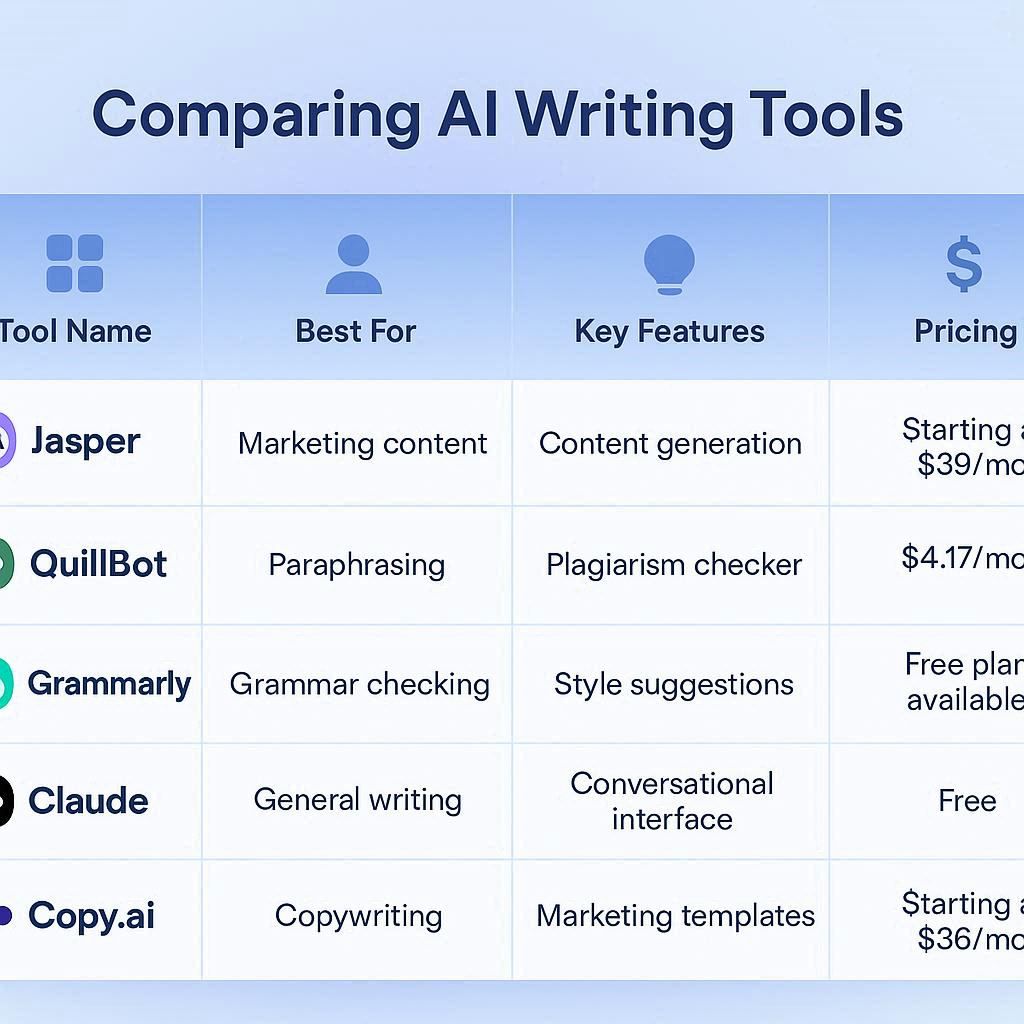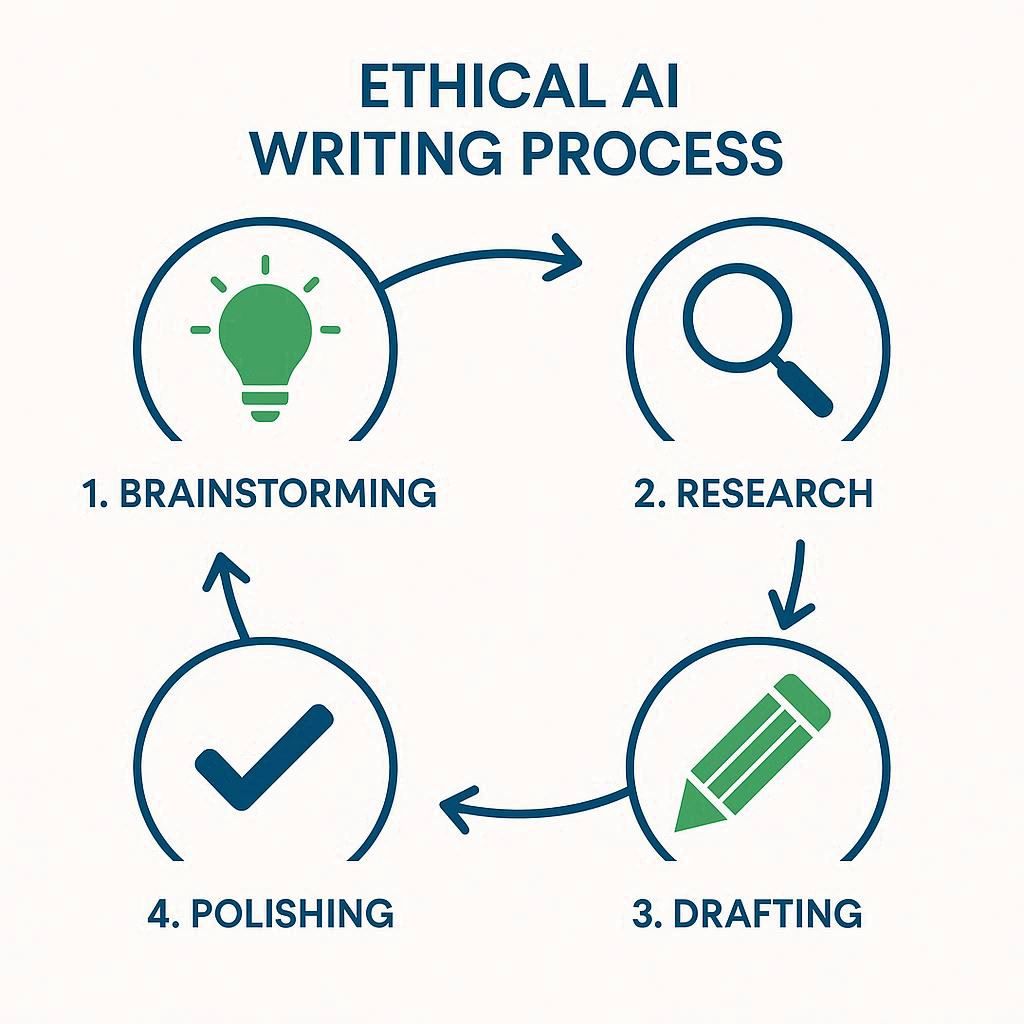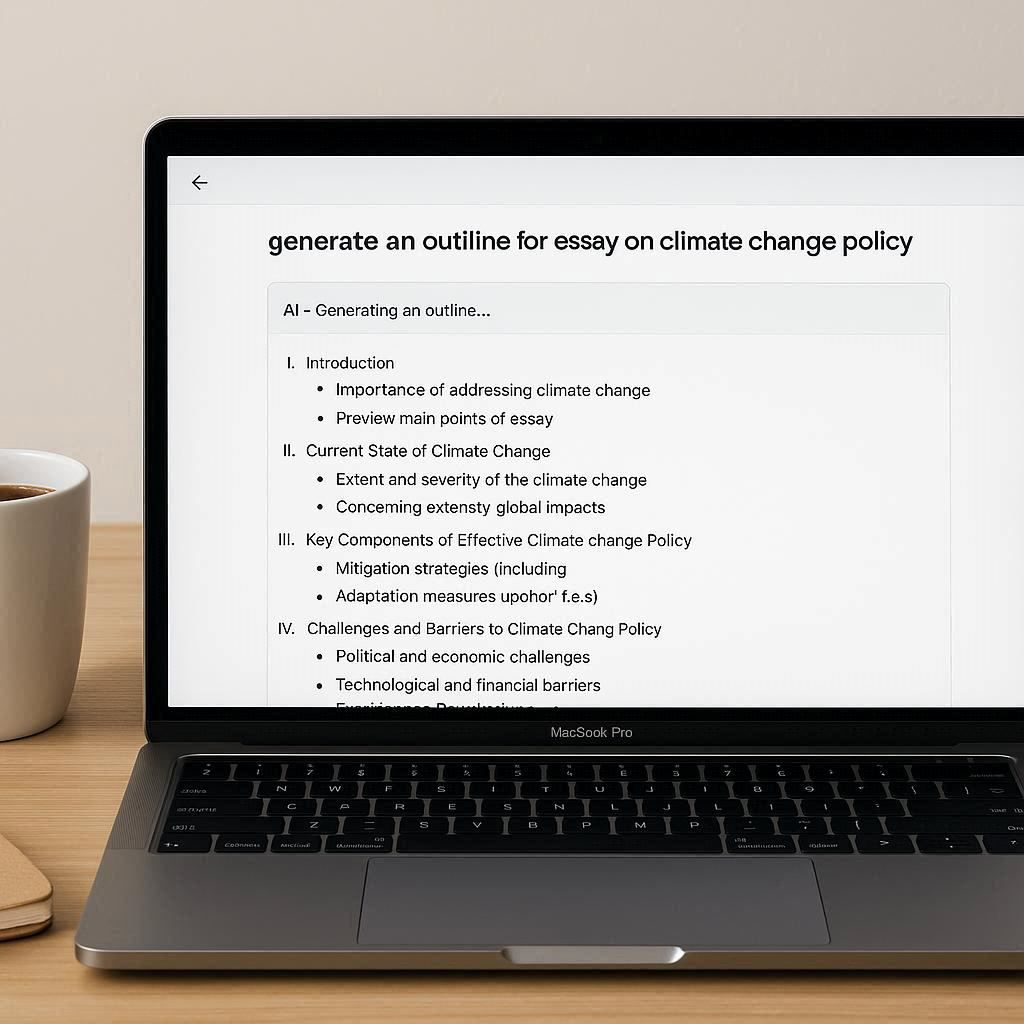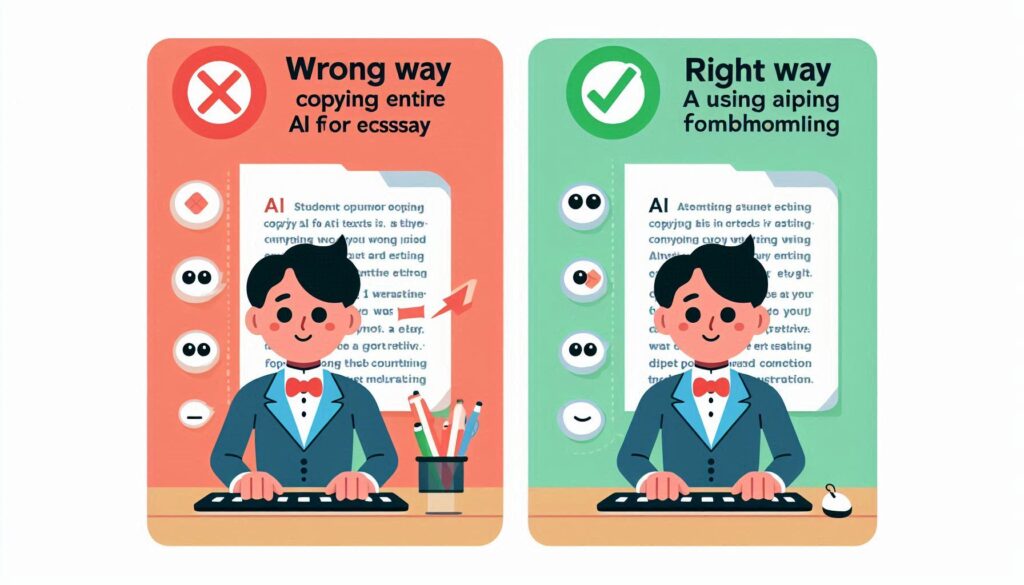I remember my junior year at UCLA. It was a beautiful but brutal time. I was double-majoring in English and Computer Science, juggling a part-time job, and trying to maintain a semblance of a social life in Los Angeles. The pressure was immense. My essays, once a source of pride, started feeling like a chore. The dreaded “writer’s block” wasn’t a myth; it was a daily reality. I’d stare at a blank Google Doc for hours, the cursor blinking, mocking me. I felt like I was falling behind, not just on my deadlines, but on my ability to even start.

“I remember one specific night in Powell Library. It was 2 AM, I was fueled by cheap coffee from the vending machine near Royce Hall, and I had a 10-page paper on post-modernist literature due in 8 hours. The pressure was so intense I could feel a headache coming on. That was the moment I decided there had to be a better, smarter way to get the work done without sacrificing my sanity or academic integrity.”
Then I heard whispers about a new kind of software. Not the old-school grammar checkers, but something that could actually help you brainstorm, outline, and even draft content. I was skeptical. As an English major, my professors had drilled into me the importance of original thought and the dangers of academic dishonesty. But as a computer science student, I was fascinated by the technology. Could an AI essay writer be a legitimate tool for a college student, or was it just a shortcut to trouble?
This question sparked a personal deep dive. I spent months testing and evaluating dozens of AI writing tools, from the free ones everyone knows to the specialized, academic-focused platforms. My goal wasn’t to find a “cheating machine,” but to discover the best AI essay writer for college students who want to improve their writing, save time, and maintain academic integrity.
In this comprehensive guide, I’ll share everything I’ve learned. We’ll cut through the marketing jargon and the moral panic to find a solution that’s ethical, effective, and truly helpful for the modern American student. By the time you’re done reading, you’ll know exactly what to look for and how to use these tools to elevate your academic work, not compromise it.
Why Using an AI Essay Writer Matters for Today’s College Student
The landscape of college education has changed dramatically. Students today are facing more demands than ever before. According to recent data from the National Center for Education Statistics, a significant majority of full-time undergraduates—well over half—are also balancing part-time employment, making time management their most valuable skill. This isn’t just a matter of “time management” anymore; it’s a juggling act that leaves little room for the hours of deep, reflective writing that a high-quality essay requires.
This is where the right AI writing tool becomes a game-changer. It’s not about replacing your effort; it’s about augmenting it. Think of it as a next-generation research assistant and brainstorming partner rolled into one. Here are the key pain points these tools can solve:
- Beating Writer’s Block: The blank page is the most formidable enemy of any writer. An AI can provide an initial outline or a few opening paragraphs to break the ice and get your thoughts flowing.
- Improving Writing Quality: Even for A-students, a fresh set of eyes can catch repetitive phrases, suggest stronger vocabulary, or restructure a confusing sentence. The top AI tools offer advanced grammar, style, and clarity suggestions that go far beyond what a basic spell-checker can do.
- Enhancing Research & Outlining: Instead of sifting through dozens of academic papers, you can use an AI to summarize key concepts or generate a structured outline for your topic. It’s a powerful tool for accelerating the early stages of the writing process.
- Saving Precious Time: For students in New York or California with packed schedules, time is a non-renewable resource. Industry data from a recent survey suggests that students who use AI responsibly for academic work can reduce their essay drafting time by up to 40%, freeing up hours for studying, working, or getting some much-needed rest.
The key, however, is to find the best AI essay writer for college students that is specifically designed for this purpose, not just a general-purpose chatbot.
The Essential Features of the Best AI Essay Writer for College Students
Choosing the right tool is a crucial first step. With a new AI platform popping up every week, it’s easy to get overwhelmed. Based on my extensive testing, here are the non-negotiable features you should look for.

1. Academic Integrity & Plagiarism-Free Content
This is the most important feature. The AI should be a tool for original creation, not a shortcut to academic misconduct. The best platforms do one of two things:
- They generate entirely new text that is unlikely to be flagged by plagiarism detectors like Turnitin.
- They provide built-in plagiarism checkers to ensure the content is 100% original.
Beware of tools that simply “spin” existing articles. A high-quality AI for academic work is trained on vast datasets but is engineered to create novel combinations of language.
2. Fact-Checking and Citation Capabilities
AI “hallucinations”—where the AI confidently presents false information as fact—are a major risk. A premium academic AI writer should have a built-in mechanism for verifying claims. Some of the most advanced tools can even:
- Access academic databases and peer-reviewed journals.
- Generate real, correctly formatted citations (APA, MLA, Chicago, etc.) for the sources it uses.
This feature is a game-changer for research papers and literature reviews.
3. Customization & Tone Control
Your essay needs to sound like you, not a robot. The best AI essay writers allow you to:
- Adjust the tone (formal, academic, persuasive, etc.).
- Input your own voice and style preferences.
- Control the level of detail and complexity.
This allows the AI to act as a co-pilot, helping you articulate your own ideas more effectively. For example, if you’re writing a psychology paper, you can prompt the AI to use more clinical language and cite specific researchers.
4. Usability and User Interface (UI)
An AI tool is only useful if you can use it effectively. The UI should be intuitive and easy to navigate. Look for features like:
- A clean, minimal editor.
- Clear prompts and templates for different essay types (e.g., argumentative, descriptive, comparative).
- Easy export options (Word, PDF, plain text).
As a former student, I know how frustrating it is to waste time figuring out how to use a clunky piece of software. The best tools are designed to streamline your workflow, not complicate it.
5. Ethical Guidelines & Responsible Use
Finally, a truly professional AI essay writer will include clear guidance on how to use their tool responsibly and ethically. They should frame their product not as a replacement for a student’s hard work, but as a supplementary aid. This shows a commitment to academic integrity and a deeper understanding of the needs of their user base.
A Step-by-Step Framework for Ethical AI-Powered Essay Writing
Now that you know what to look for, let’s talk about the “how.” Simply hitting “generate” and submitting the result is a recipe for disaster. Here is my proven framework for using an AI tool to write a high-quality, original essay that you can be proud of.

Step 1: Brainstorming & Outlining with AI (The Foundation)
This is where AI provides the most value. Don’t start with a blank page. Instead, start with a detailed prompt.
- Example Prompt: “Generate a comprehensive outline for a 1,500-word argumentative essay on whether the widespread use of cell phones in K-12 classrooms should be banned. Include a strong thesis statement, at least three main arguments, and potential counterarguments to address.”
- Result: The AI provides a structured, logical framework. You can then edit, rearrange, and add your own points.
Step 2: Research & Information Gathering (The Data)
Use the AI to accelerate your research, but never, ever skip the human verification.
- Example Prompt: “Summarize the key findings from a recent study on the impact of social media use on teenage mental health, specifically referencing a peer-reviewed source from 2024 or 2025.”
- Result: The AI provides a summary. Your job is to then find and read that actual study to ensure the information is correct and the citation is real. This is where an AI tool with built-in academic search becomes invaluable.
Step 3: Drafting & Expansion (The Creation)
With your outline and research in hand, you can begin drafting. Use the AI to expand on your points or rephrase sentences.
- Example Prompt: “Expand the following outline point into a 250-word paragraph: ‘Main Argument 1: Cell phones are a significant source of distraction that negatively impacts student focus and academic performance.'”

- Result: The AI generates a draft paragraph. Read it, and then rewrite it in your own words. Add specific examples from your research or personal experience.
- Pro Tip: See the screenshot below for an example of how I used Jasper to expand a simple bullet point into a draft paragraph for a psychology paper. Notice how I then edited it heavily to add my own analysis and examples from my textbook. This is the critical step that turns a generic AI output into a unique, authentic piece of writing. Remember, the AI is a sculptor, and you are the artist. You must chisel away at the rough block until you have your masterpiece.
Step 4: Revision & Polishing (The Final Touches)
Once your full draft is complete, the AI can act as your personal editor.
- Example Prompt: “Review the following essay for grammar, clarity, and logical flow. Suggest ways to make the conclusion more impactful.”
- Result: The AI provides feedback and corrections. You can then accept or reject its suggestions, ensuring the final piece maintains your voice and meets your professor’s standards.
Using this four-step process, you’re not outsourcing your intellect; you’re leveraging technology to make your intellect more efficient and powerful.
| Tool Name | Best For | Key Feature | Pricing (Approx.) |
|---|---|---|---|
| Jasper | Long-form essays & research papers | Templates, SEO mode, Brand Voice | $49/month |
| QuillBot | Paraphrasing & Editing | Powerful synonym tool, Summarizer | Free plan available |
| Grammarly | Grammar, Tone & Plagiarism Check | Real-time editing, Plagiarism Detector | $12/month |
| Claude | Brainstorming & Outlining | Large context window for long documents | $20/month |
| Copy.ai | Overcoming Writer’s Block | Creative prompts for starting essays | $49/month |
Note: Always check for student discounts on their official websites!
- Image Title: Best AI Essay Writers for College Students: A 2025 Comparison
- Columns: Tool Name, Best For, Key Features, Pricing (Free Tier/Subscription), Ethical Rating (1-5 Stars).
- Rows: Include leading tools like Jasper, QuillBot, Grammarly, and others that are prominent in the academic space.
Common Mistakes to Avoid When Using an AI Essay Writer
The line between a helpful tool and a harmful crutch is thin. Here are the most common pitfalls I’ve seen students fall into and how to avoid them.

Mistake #1: Over-Reliance & The “One-Click” Essay
The Problem: Students copy and paste a prompt, hit “generate,” and submit the entire text without a single edit. This is not only a violation of most academic honesty policies but also produces generic, soulless writing that is easily detectable. I know a student from Texas who tried this and was immediately flagged by their professor, not by an AI detector, but because the writing style was completely inconsistent with their previous work.
The Fix: Use the tool as a starting point, not the end destination. Your goal is to make the final essay undeniably “yours.” Every paragraph should contain your unique insights, examples, and personal perspective.
Mistake #2: Trusting AI to Do the Research
The Problem: AI models are not search engines. They don’t “look up” information in real-time. Instead, they retrieve data from their training set, which can be outdated or, in the case of AI hallucinations, completely made up. Citing a fake source is a major academic offense.
The Fix: Always, always, always fact-check. If the AI provides a statistic or a quote, find the original source and verify it yourself. Use the AI to find avenues for research, not to replace it.
Mistake #3: Ignoring Institutional Policies
The Problem: Many universities, from state schools to Ivy Leagues, have clear guidelines on the use of AI in academic work. Some may forbid it entirely, while others allow its use for specific purposes like brainstorming or editing.
The Fix: Read your school’s and your professor’s syllabus carefully. If there’s any ambiguity, ask. Being proactive shows that you’re committed to academic integrity. In my personal experience, a simple question like, “Is it okay if I use an AI tool to help me outline my paper?” can save you from a lot of trouble down the line.
Frequently Asked Questions About AI Essay Writers
Is using an AI essay writer cheating?
This is a nuanced issue. If you use an AI tool to generate an entire essay and submit it as your own work, most universities would consider this a form of plagiarism or academic misconduct. However, if you use the tool responsibly—for brainstorming, outlining, or as a grammar/style checker—it is no different than using a calculator in a math class or a spell checker in a word processor. The key is how you use it and whether you are transparent about your process if required.
Can an AI essay writer produce a high-quality, college-level essay?
The current generation of AI can produce technically correct and coherent drafts, but they often lack the depth, critical analysis, and unique voice that characterize an A-grade college essay. Think of it this way: an AI can write a technically sound narrative about the Civil War, but it can’t capture your unique analysis of a specific battle’s impact on a local community in Virginia unless you feed it that specific, nuanced information. The best essays require human reflection and insight.
How do I know if my professor will be able to detect AI-generated content?
While there are AI detection tools, their accuracy is often debated, and they can produce false positives. The best way to avoid detection is to ensure the final essay is genuinely your own work. This means:
- Mixing in your personal experiences and unique examples.
- Rewriting and editing the AI-generated text extensively.
- Ensuring the tone and style are consistent with your own writing.
- Citing all sources properly, including those you found with the AI’s help.
Are there any free AI essay writers that are good for college students?
Many platforms offer a free tier with limited functionality. Free tools like QuillBot’s paraphraser or Grammarly’s basic grammar checker are excellent for editing and improving existing text. However, for more advanced features like comprehensive content generation or academic citation, you will likely need to explore paid subscriptions. It’s often worth the small investment for the time and quality benefits, especially when you consider the cost of a single college textbook.
Conclusion
The rise of AI in education is not a threat to college students’ intelligence; it’s an opportunity. The key is to see these tools not as a way to avoid work, but as a way to enhance your learning and writing skills. The best AI essay writer for college students is the one that empowers you to think more critically, research more efficiently, and write more effectively.
I’ve seen firsthand how a well-used AI tool can transform a student’s experience. It can turn the anxiety of a looming deadline into the excitement of a new project. It can help a nervous writer find their voice and a seasoned one push their boundaries.
Don’t let the fear of cheating stop you from exploring this new frontier. Instead, arm yourself with knowledge, choose the right tool, and use it responsibly. When you do, you’ll discover that the most powerful AI isn’t the one that writes for you, but the one that helps you become a better writer yourself.

Ready to transform your writing process? My top pick for most students is Grammarly because its tone detector and plagiarism checker are invaluable for academic work. Start with their free plan today and see how much time you can save on your next assignment. Have a specific question about using AI for your major? Drop it in the comments below—I read and reply to every one!
Pingback: Free AI Tools for Paraphrasing and Avoiding Plagiarism
Pingback: 9 Ultimate: AI Tool That Converts Lecture Audio To Notes Easily
Pingback: 15 Ultimate artificial intelligence tools for 2025